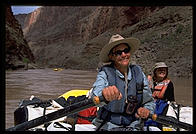
Rafting through the Grand Canyon
by Philip Greenspun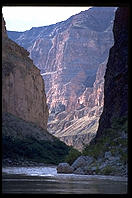

|
Rafting through the Grand Canyonby Philip Greenspun |

|
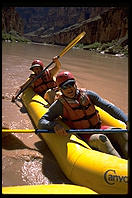 There are three ways to see the Grand Canyon:
There are three ways to see the Grand Canyon:
A raft is good because it is relatively fast, motive power comes from the river, and you don't have to worry about the weight of your food and supplies. There is only one minor problem with rafting: the water can get a little rough at times. In fact, the Colorado River through the Grand Canyon is one of the wildest stretches of white water in the United States. During my August 1999 trip down the river, a big motor-powered raft two hours behind us lost a passenger overboard in a rapid. The guide cut the motor so that the propeller wouldn't cut the swimmer. The powerless raft got stuck against a rock and stayed there for a couple of days. The passengers were pulled off by helicopter.
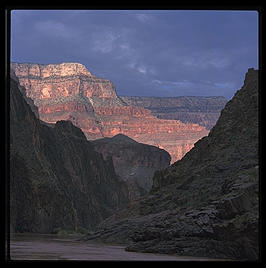
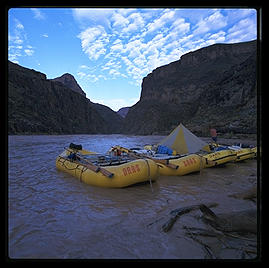
 You have three choices in boating through the Grand Canyon:
You have three choices in boating through the Grand Canyon:
What does that leave? An oar-powered boat. I went rafting with OARS (www.oars.com). The OARS guides are among the most experienced on the river. Bruce Helin, for example, had run the Colorado every summer 1967 through my trip (1999). All of our guides were superb, so if you can book a trip with Nancy Helin, Bruce Helin, Scott Stevens, or Rob Pitagora, you'll be in good hands.
On an OARS trip, the guides set up the camp and the meals while you pitch your tent.
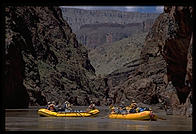
There are two trails from the South Rim down to Phantom Ranch. The Kaibab is shorter and steeper. It is a ridge trail and therefore affords mangificent views at all times. No water is available on this trail, which is why people who hike the canyon always go down the Kaibab and up the second trail: Bright Angel Trail. Bright Angel follows a stream that has created a side canyon. The views are therefore more intimate. The freshwater supply Phantom Ranch is piped down along Bright Angel trail, which means that the Park Service has been able to place a few water taps along the trail.
You can walk down (hard on your feet but only for about three hours on the 7-mile Kaibab Trail, maybe four or five hours on the 10 miles of Bright Angel). You can hire a private mule train and trade sore feet for a sore butt, legs, back, etc.

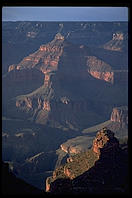
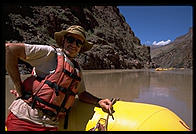
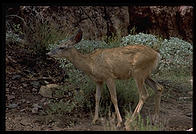
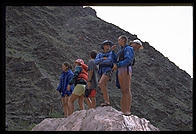
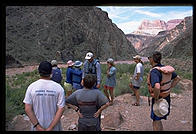
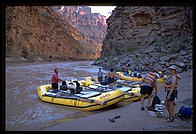
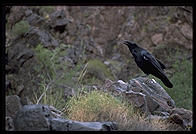
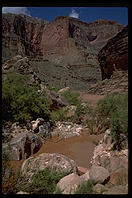 Grand Canyon National Park contains more than 1 million acres of land.
Not all of the most beautiful is right along the Colorado
River. Sometimes you'll want to hike up a bit into a side canyon.
Grand Canyon National Park contains more than 1 million acres of land.
Not all of the most beautiful is right along the Colorado
River. Sometimes you'll want to hike up a bit into a side canyon.
Sad Fact #1 about side canyons is that they tend to be carved by water, which makes it tough to walk right up the center. You might be standing in deep water or have to climb up a torrential water fall. Sad Fact #2 about side canyons is that they tend to be very steep, just like the main canyon. So you need to stick to the trail up the canyon walls. Sad Fact #3 about side canyons is that they don't get five million visitors per year like the canyon rims and therefore nobody really bothers to build or maintain trails.
Before we'd go up a side-canyon trail, our guides would say "there might be a little exposure on this trail." Lynn said "ah, that means another near-death experience". To their credit, the guides would often serve as human guardrails for us and the ultimate destination always seemed worth it.
Here are some snapshots from Deer Creek:
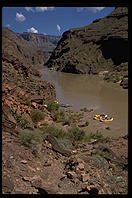
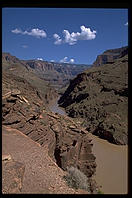
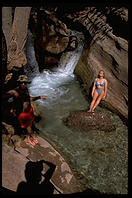
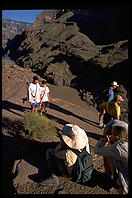
And some miscellaneous waterfalls in side canyons...
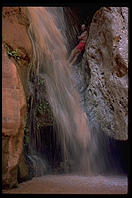
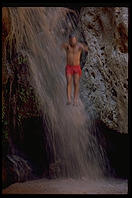
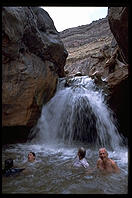
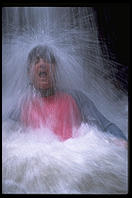
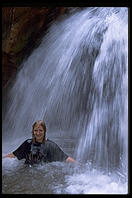
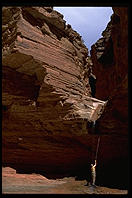
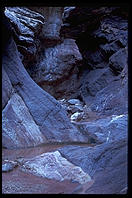
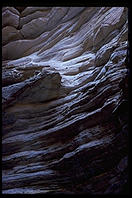
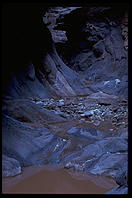
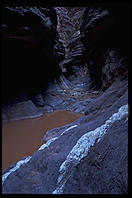
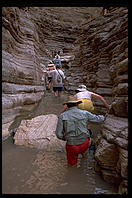
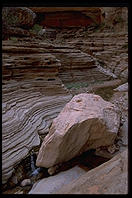
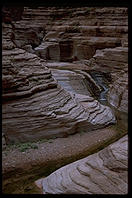

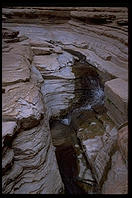
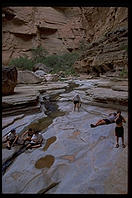
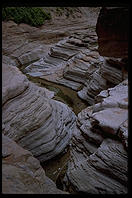
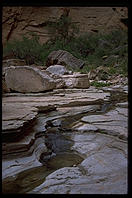
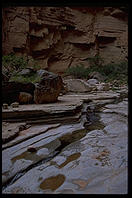
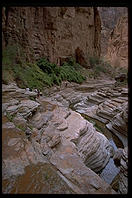
Severe Flooding has a tendency to destroy the travertine. Any recent rain will make the waters muddy. My trip, in August 1999, was six years after a huge flood in 1993 and a few days after some rain. So the water wasn't clear and there weren't any of the Travertine deposits that you might see in an Eliot Porter photo of Havasu.
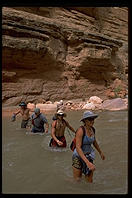

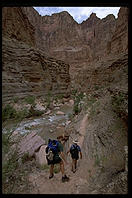
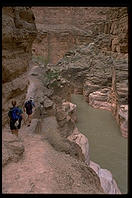
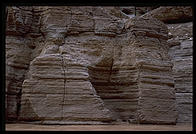
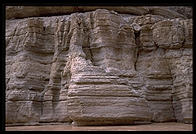
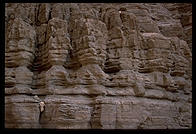
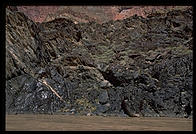
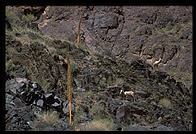
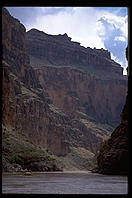
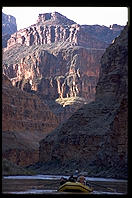
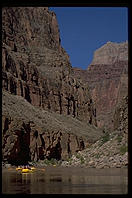

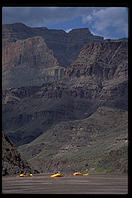
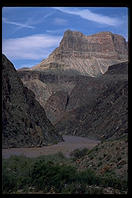
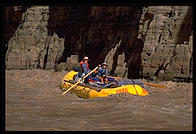
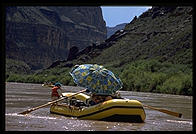
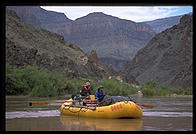

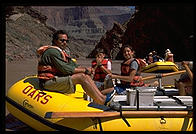
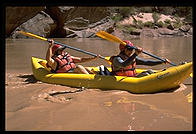
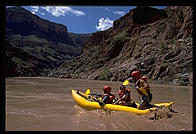
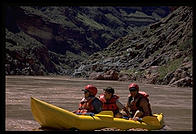
(Tom Huntington earned his "Tommy Turnover" nickname during five years of full-time river guiding.)
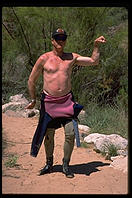

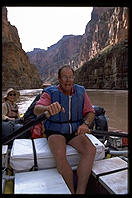
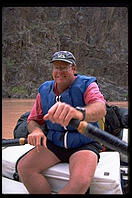
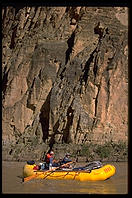
... (not to mention serving as human guard rails for klutzy fat desk jockeys, cooking and cleaning up three meals per day for rich folks who think the Four Seaons is roughing it, etc.)
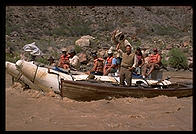 Powell was the first white man to boat through the Grand Canyon. When
practical, he lined or carried his boats through every rapid. Here is a
fraudulent reenactment of Powell's trip. Here modern-day river guides
run Lava Falls, where in fact it would have been possible for Powell to
carry the boats around. National Geographic was filming a TV special of
Powell's trip.
Powell was the first white man to boat through the Grand Canyon. When
practical, he lined or carried his boats through every rapid. Here is a
fraudulent reenactment of Powell's trip. Here modern-day river guides
run Lava Falls, where in fact it would have been possible for Powell to
carry the boats around. National Geographic was filming a TV special of
Powell's trip.
... then boat 1 ...
... then boat 2 ...
We didn't stick around for the last of Powell's boats.
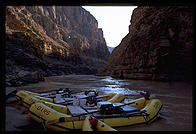
... the Bar 10 comes into view ...
One of the good things about this trip is that you can see where the Grand Canyon ends as the Colorado flows into Lake Mead.
What now? If you want to thoroughly cleanse yourself of the wilderness and get back to your natural state as a person of plastic, spend a couple of nights in Las Vegas.
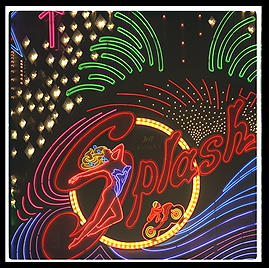
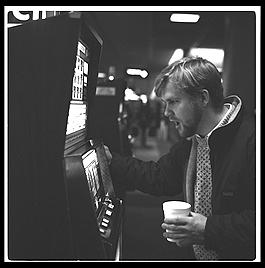
While reading, listen to Ferde Grofé's Grand Canyon Suite, available on lots of CDs including this one with a bunch of Copland.